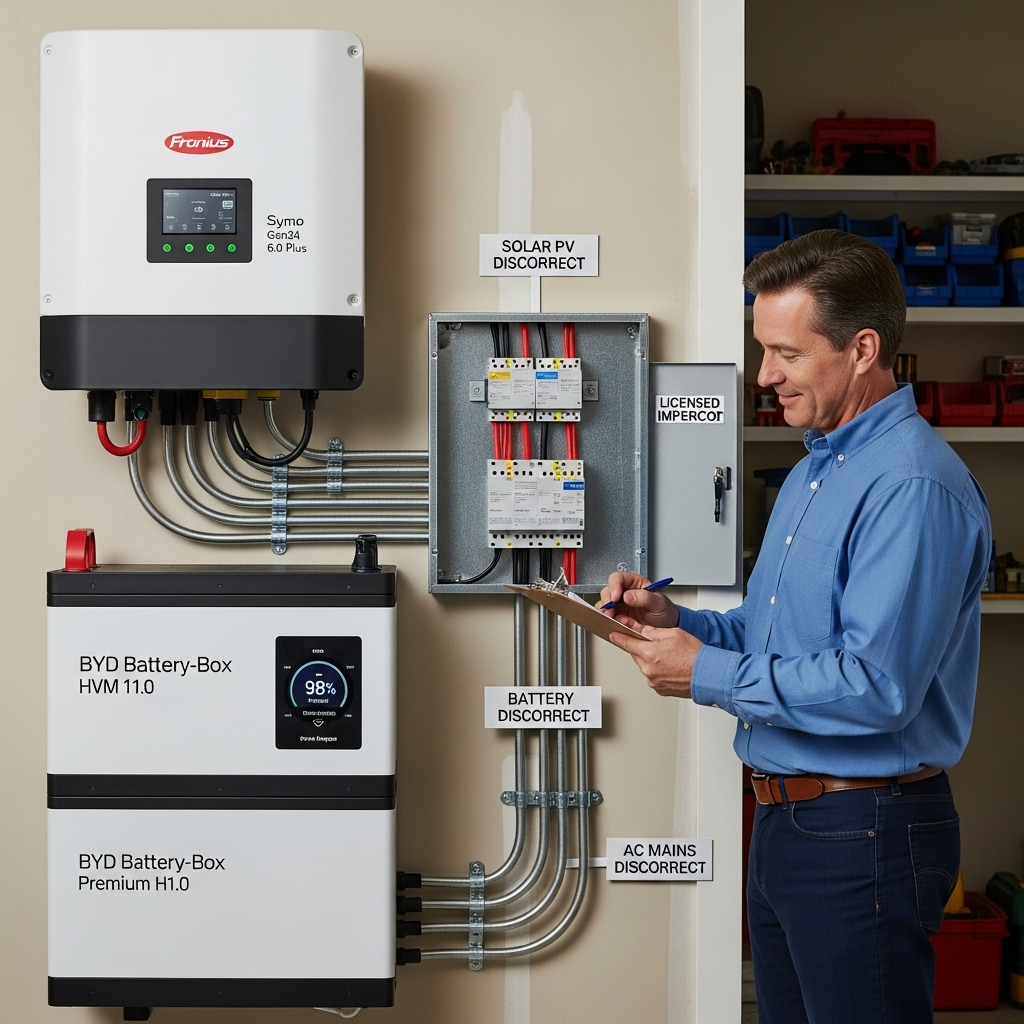Connecting a solar and energy storage system to the grid is a milestone that goes beyond the physical installation. It requires passing a series of rigorous checks designed to protect the stability and safety of the entire power network. These checks are defined by utility grid codes, which are the technical rulebooks for grid interconnection. Successfully navigating these commissioning procedures is critical for any project seeking to achieve permission to operate (PTO).
Understanding the Landscape of Grid Code Compliance
Grid code compliance is not a single event but a comprehensive process. It ensures that every new energy resource, from a residential solar array to a utility-scale battery system, acts as a good citizen of the grid. This framework is built on collaboration and a deep understanding of the power system's needs.
The Role of Grid Codes in a Modern Power System
Grid codes are technical specifications that renewable energy projects must meet to connect to the electrical grid. Their primary purpose is to maintain grid stability, reliability, and safety, especially as more variable renewable energy (VRE) sources come online. The development of these codes is a careful process. A report on Grid Codes for Renewable Powered Systems emphasizes that defining codes specific to each system’s characteristics is essential for enabling the integration of renewables and ensuring good system functioning. This means the rules in one region may differ from another, reflecting local grid conditions and future development plans.
A Collaborative Compliance Effort
Achieving grid code compliance is a shared responsibility. It involves a partnership between equipment manufacturers, project developers, and the power system operators themselves. According to the International Renewable Energy Agency (IRENA), the highest levels of compliance are reached when all stakeholders collaborate. This cooperation helps find a reasonable compromise between the desired technical performance and the practical efforts of implementation and verification. This ensures the rules are both effective and achievable.
Core Commissioning Tests for Grid Interconnection
On-site commissioning tests are the final exam before a system can be officially connected to the grid. These hands-on procedures verify that the installed equipment performs as expected under real-world and simulated grid conditions. These tests are performed after construction is complete and the system is ready for activation.

Anti-Ilanding and Ride-Through Capabilities
Two of the most critical safety and reliability tests involve how the system behaves during a grid outage or disturbance. The anti-islanding test simulates a grid failure to confirm the system’s inverter automatically shuts down, typically within two seconds as specified by standards like IEEE 1547. This prevents the system from energizing a downed power line, protecting utility workers. Voltage and Frequency Ride-Through tests (LVRT/HVRT/LFRT/HFRT) verify that the system can remain connected during minor grid voltage or frequency fluctuations, preventing a mass trip-off of generators during a small disturbance.
Power Quality and Control System Verification
Modern power electronics, like inverters, must not negatively impact the grid's power quality. A harmonic distortion test measures the electrical "noise" the inverter produces to ensure it remains within acceptable limits, typically a Total Harmonic Distortion (THD) of less than 5%. Additionally, tests for Volt/VAR and power factor control verify the system's ability to manage reactive power. This function is vital for helping the utility maintain stable voltage levels across the grid.
Ramp Rate and Power Output Control
Utilities require that solar and storage systems manage their power output smoothly to avoid sudden shocks to the grid. Ramp rate control tests verify that the system can increase or decrease its power generation at a controlled, specified rate. This prevents instability that could be caused by, for example, a large solar farm's output dropping instantly as a cloud passes overhead.
A Multi-Faceted Approach to Verification
Grid code compliance relies on more than just on-site testing. A comprehensive strategy combines verification at multiple stages of the project lifecycle, from equipment manufacturing to long-term operation. This layered approach increases confidence and is more cost-effective than relying on a single method.
Type Tests and Manufacturer Certification
Type tests are performed in a controlled laboratory setting on a representative sample of a product, such as an inverter. As noted in the Grid Codes for Renewable Powered Systems report, these tests are important for any mass-produced equipment. If a product model passes, the manufacturer can issue a certificate of conformity. This certification simplifies the on-site commissioning process because it provides the utility with confidence that the equipment is capable of meeting technical requirements before it is even installed.
The Role of Simulation and Modeling
Before any equipment is installed, computer simulations play a crucial role. Developers use sophisticated software to create a validated model of the proposed system and simulate its behavior under various grid conditions. These simulation tests, often submitted as part of the interconnection application, demonstrate compliance with grid code requirements in the design phase, identifying potential issues long before construction begins.
Data and Performance in Grid Compliance
Underlying all these tests is data. Accurate performance metrics are the foundation of verifying compliance and ensuring the long-term health and reliability of an energy storage system. These metrics are not just for the system owner; they are vital for grid operators who depend on predictable and controllable resources.
Measuring What Matters: Key Performance Indicators
To meet grid code requirements, a system must perform efficiently and predictably. For a deeper look at the metrics that define system health, the ultimate reference on solar storage performance provides detailed information on Round-Trip Efficiency (RTE), Depth of Discharge (DoD), and C-rates. For example, a high RTE means the system can respond to grid commands with minimal energy loss, while its C-rate determines how quickly it can charge or discharge to provide grid services. These factors directly impact how a system can fulfill its obligations under the grid code.
Comparative Analysis of Compliance Tests
The different verification methods work together to provide a complete picture of grid code compliance. Each has a distinct purpose and is applied at a different stage of the project.
| Test Type | Purpose | Typical Standard | Verification Stage |
|---|---|---|---|
| Anti-Islanding Test | Ensures inverter disconnects from a de-energized grid for safety. | IEEE 1547 | On-Site Commissioning |
| Voltage Ride-Through (LVRT/HVRT) | Verifies the system remains connected during voltage sags or swells. | Utility Specific (based on IEEE 1547) | On-Site Commissioning |
| Power Quality (THD) | Measures harmonic distortion to ensure clean power output. | IEEE 519 | On-Site Commissioning |
| Type Testing | Certifies that a product model meets standards in a lab environment. | UL 1741, IEEE 1547.1 | Pre-Construction (Manufacturing) |
| Simulation & Modeling | Predicts system behavior and demonstrates design compliance. | Utility Specific | Design & Planning |
Final Thoughts on Ensuring a Smooth Interconnection
Successfully meeting utility grid codes is a critical step in bringing a renewable energy project online. It is a detailed process that extends from the factory floor to the project site and continues throughout the system's operational life. By combining manufacturer type tests, detailed simulations, and rigorous on-site commissioning, developers and utilities can work together to build a reliable, stable, and clean energy grid for the future. Proactive planning and a thorough understanding of these commissioning tests are the best way to ensure a smooth and successful grid interconnection.
Disclaimer: This information is for educational purposes only. Always consult with qualified engineers and your local utility to ensure compliance with the specific grid interconnection standards applicable to your project. This content does not constitute legal or investment advice.
Frequently Asked Questions
What is the difference between commissioning tests and type tests?
Type tests are performed in a laboratory on a sample product to certify a specific model line. Commissioning tests are conducted on-site on the actual installed equipment to verify its performance within the specific project and local grid conditions.
Which standard is most important for grid interconnection in the US?
IEEE 1547 is the foundational standard for interconnecting Distributed Energy Resources (DER) with electric power systems in the United States. It provides the technical specifications and testing requirements that most utility grid codes are based on.
Why do grid codes vary between different utilities and regions?
Grid codes are tailored to the specific characteristics of the local power system. Factors like grid size, existing generation mix, system stability, and future expansion plans influence the technical requirements. As stated in a report by IRENA, defining grid codes specific to each system’s characteristics is crucial for successful VRE integration.
What happens if a system fails a commissioning test?
If a system fails a test, it cannot be connected to the grid. The developer must identify the cause of the failure—which could be an equipment malfunction, incorrect settings, or a design flaw—and rectify it. The test must then be repeated successfully before the utility grants permission to operate.





Leave a comment
All comments are moderated before being published.
This site is protected by hCaptcha and the hCaptcha Privacy Policy and Terms of Service apply.